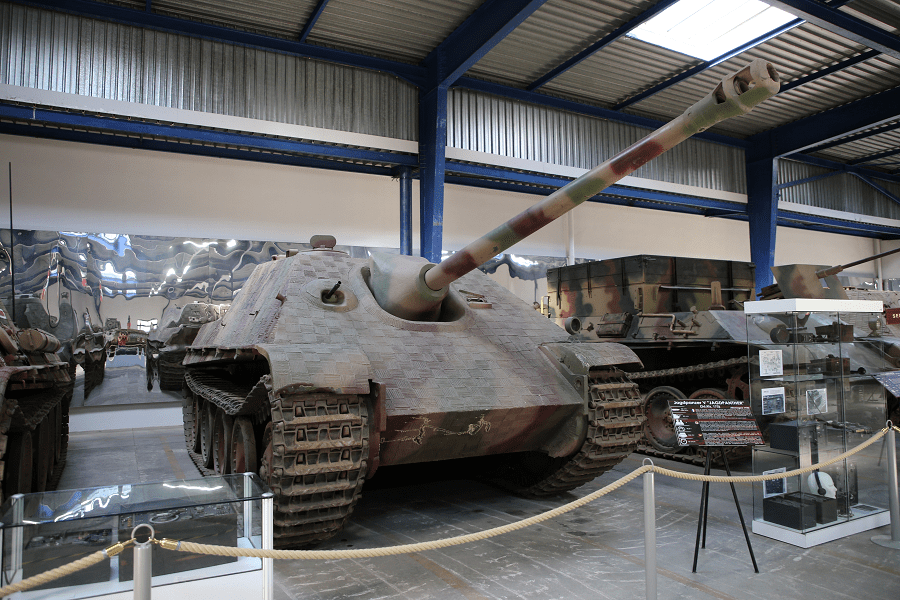The Jagdpanther (German: “hunting panther”), Sd.Kfz. 173, was a highly-successful tank destroyer built by Germany during World War II based on the chassis of the Panther tank.
The Jagdpanther (German: “hunting Panther”), Sd.Kfz. 173, was a tank destroyer (Jagdpanzer, a self-propelled anti-tank gun) built by Germany during World War II. The Jagdpanther combined the 8.8 cm Pak 43 anti-tank gun, similar to the main gun of the Tiger II, and the armor and suspension of the Panther chassis.
It entered service in 1944 and served on the Eastern and Western Fronts. During the last stages of the war, limited German production resulted in small production numbers, shortage of spare parts, and shortened crew training periods of younger operators.
The Jagdpanther was preceded by two attempts at mounting an 8.8 cm gun as a self-propelled anti-tank weapon; Ferdinand – also known as Panzerjäger Tiger (P) – using the ninety-one leftover Porsche-built VK 45.01 (P) chassis from the Tiger tank competition it lost to Henschel in 1942, and the Nashorn on the Geschützwagen III/IV (which used a combination of the Panzer III and Panzer IV components) chassis. Ferdinand proved to be too heavy, and Nashorn lightly armored and under-powered.
A heavy tank destroyer design based on the 8.8 cm Pak 43 gun and the Panther tank chassis was ordered in late 1942. The full-size model by Daimler-Benz was demonstrated in October 1943 before Hitler. MIAG-built prototypes followed in October/November 1943.
Production started in January 1944; in February, Hitler specified the simpler Jagdpanther name instead of its original “8.8 cm Pak 43/3 auf Fahrgestell Panther”.












